A block of mass m = 1 kg is placed over a plank Q of mass M = 6 kg, placed over a smooth horizontal surface as shown in figure. Block P is given a velocity v=2m/s2 to the right. If the coefficient of friction between P and Q is μ=0.3. Find the acceleration of Q relative to P.

4m/s2
3.5m/s2
2m/s2
10.0m/s2
The correct Answer is:B
Frictional force between P and Q is f=μmg which will retard P and accelerate Q.
Retardation of P is aP=−fm=−μmgm=−μg
Acceleration of Q is aQ=+fM=μmgM
Acceleration of Q relative to P is
aQP=aQ−aP=μmgM−(−μg)
=μg[1+mM]=0.3×10[1+16]=3.5m/s2
Topper's Solved these Questions
- BOOK - BITSAT GUIDECHAPTER - NEWTONS LAWS OF MOTION AND FRICTIONEXERCISE - BITSAT Archives23videos
NEWTONS LAWS OF MOTION AND FRICTION
- BOOK - BITSAT GUIDECHAPTER - MOTION IN !,2,2 DIMENSIONS AND POJECTILE MOTIONEXERCISE - All Questions86videos
MOTION IN !,2,2 DIMENSIONS AND POJECTILE MOTION
- BOOK - BITSAT GUIDECHAPTER - ROTATIONAL MOTIONEXERCISE - BITSAT Archives9videos
ROTATIONAL MOTION
Similar Questions
A block A of mass m is placed over a plankB of mass 2m plank B is placed over a smooth horizontal surface .The coefficient of friction between A and B is 0.4 Block A is given a velocity v0 toward right Find acceleration (in ms−2 of B relative to A
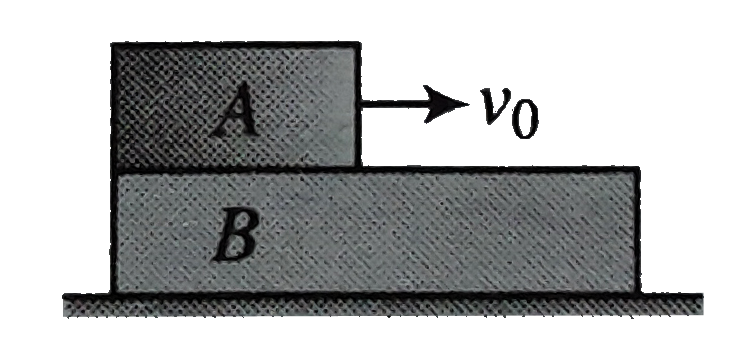 View Solution
View SolutionA block of mass m slides over a smooth wedge of mass M which is placed over a rough horizontal surface . The centre of mass of the system will move towards left
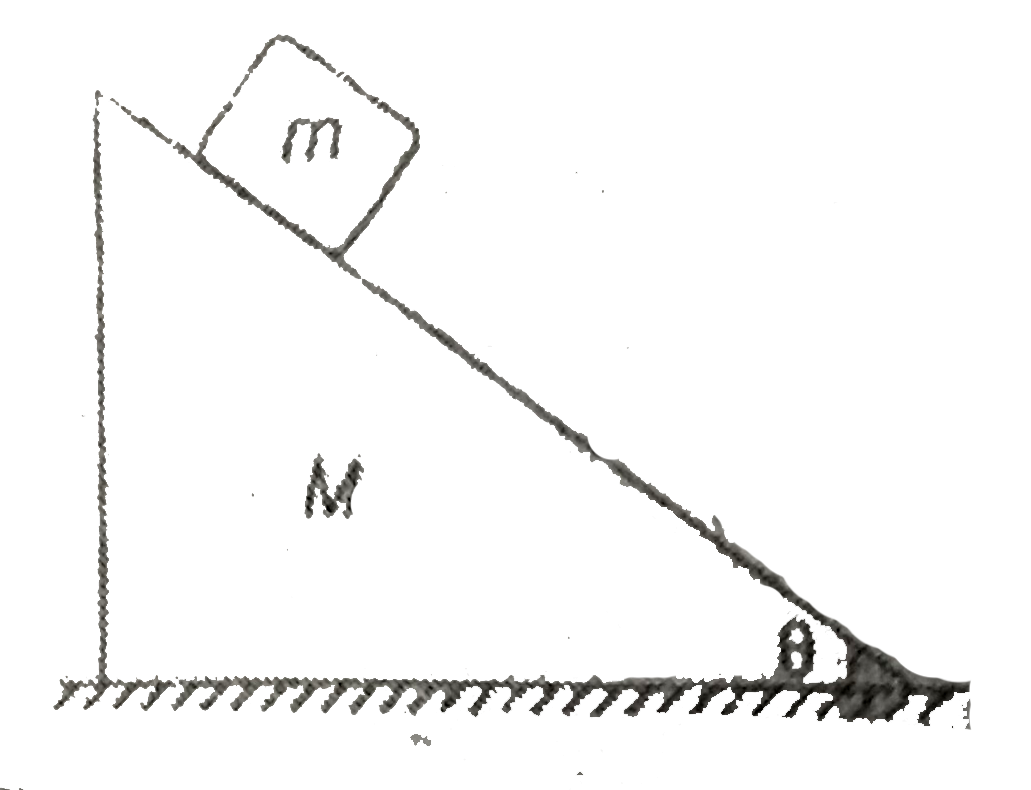
Here μ = coefficient of friction between the wedge and the ground .View Solution
Knowledge Check
- Question 1 - Select One
A block of mass m = 1 kg is placed over a plank Q of mass M = 6 kg, placed over a smooth horizontal surface as shown in figure. Block P is given a velocity v=2m/s2 to the right. If the coefficient of friction between P and Q is μ=0.3. Find the acceleration of Q relative to P.
 A4m/s2B3.5m/s2C2m/s2D10.0m/s2
A4m/s2B3.5m/s2C2m/s2D10.0m/s2 - Question 2 - Select One
A block A of mass m is placed over a plank B of mass 2m. Plank B is placed over a smooth horizontal surface. The coefficient of friction between A and B is 12 block A is given a velocity v0 towards right. Accelration of B relative to A is
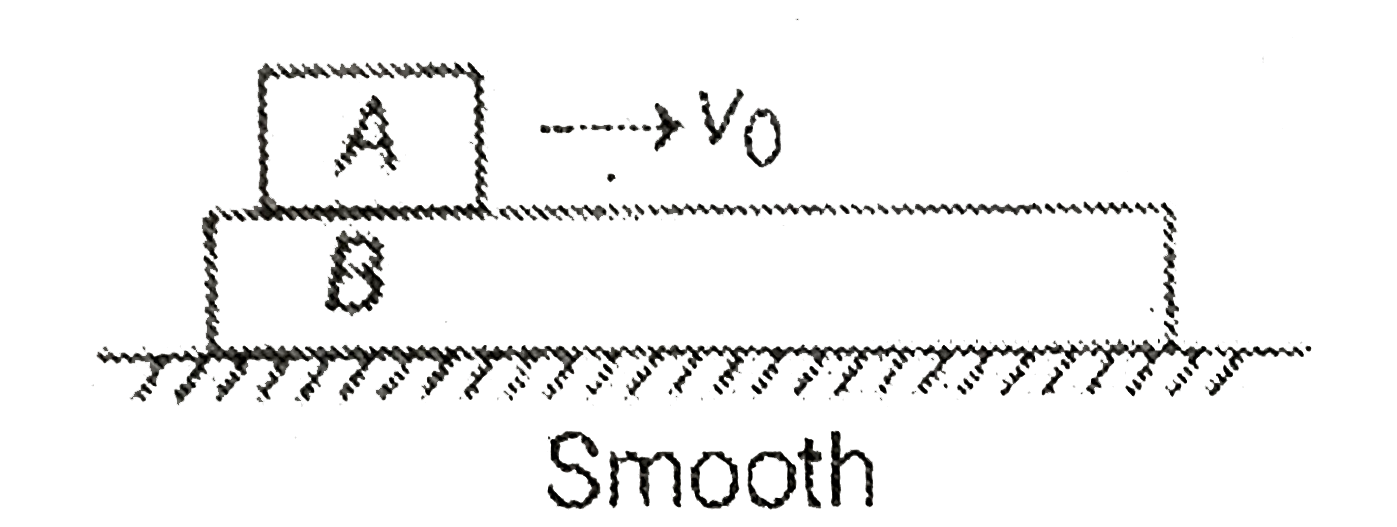 Ag2BzeroC3g4Dg4
Ag2BzeroC3g4Dg4 - Question 3 - Select One or More
A block A of mass m is over a plank B of mass 2m. Plank B si placed over a smooth horizontal surface. The coefficient of friction between A and B is 12. Blocks A is given a velocity V0 towards right. Then
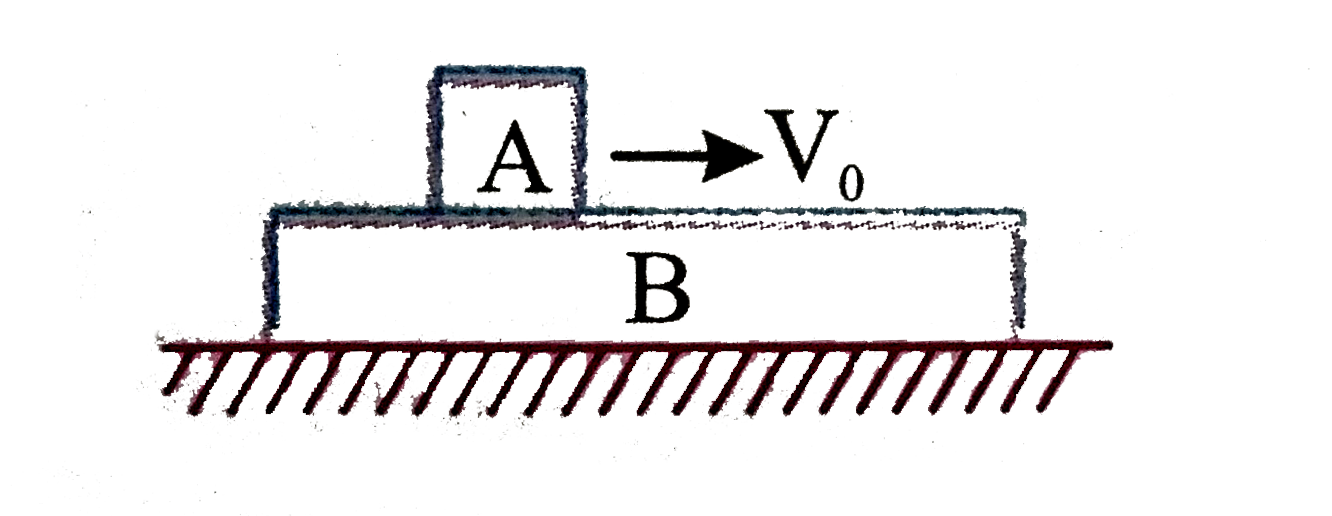 AAcceleration of A is g2BAcceleration of A is gCAcceleration of B relative to A is 34gDAcceleration of A is zero
AAcceleration of A is g2BAcceleration of A is gCAcceleration of B relative to A is 34gDAcceleration of A is zero
A block of mass m = 2kg is accelerating by a force F = 20N applied on a smooth light pulley as shown in the figure. If the coefficient of kinetic friction between the block and the surface is μ=0.3, find its acceleration.
 View Solution
View SolutionA block of mass m is placed on another block of mass M lying on a smooth horizontal surface as shown in the figure. The co-efficient of friction between the blocks is μ. Find the maximum horizontal force F (in Newton) that can be applied to the block M so that the blocks together with same acceleration? (M=3kg,m=2kg,μ=0.1,g=10m/s2)
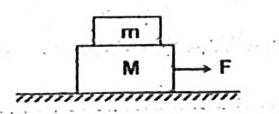 View Solution
View SolutionA block of mass m =2 kg is placed on a plank of mass M = 10 kg, which is placed on a smooth horizontal plane as shown in the figure. The coefficient of friction between the block and the plank is μ=13. If a horizontal force F is applied on the plank, then the maximum value of F for which the block and the plank move together is (g=10m/s2)
 View Solution
View SolutionConsider the system shown. A solide sphere (of mass m and radius R) is placed over a plak (of mass 2m and placed over a smooth horizontal surface.) A horizontal force F is applied at the top of the sphere, as shown. Consider that the friction between the sphere and plank is sufficient enough for no slipping of the sphere over then plank.
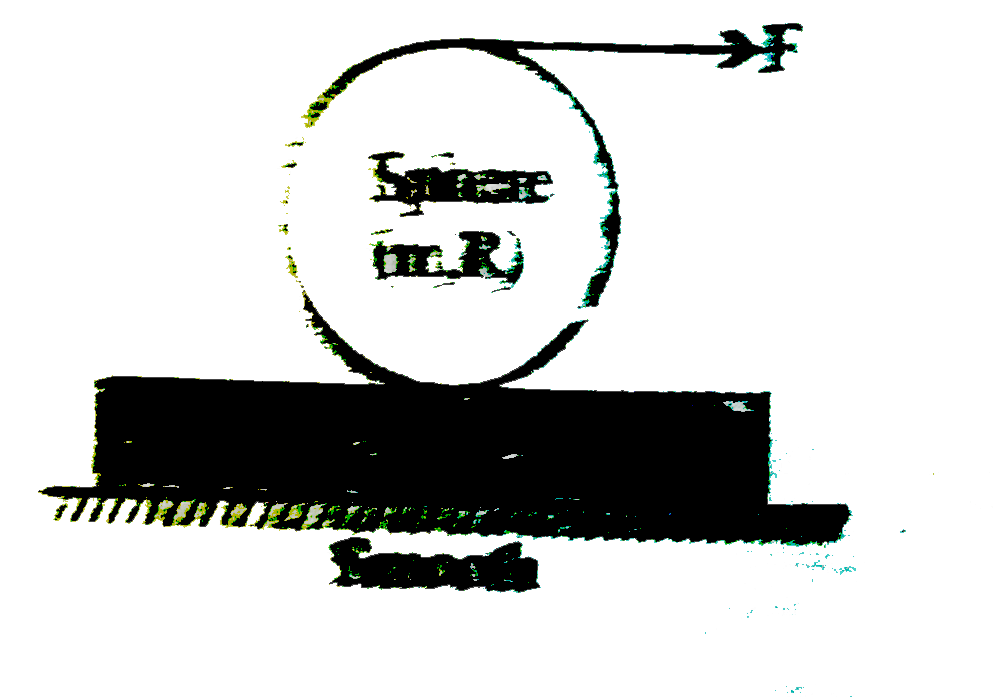
Acceleration of the plank isView SolutionA block of mass m is placed gently onto a long plank of mass M moving with a velocity v0 on a smooth horizontal floor. If friction is present between M and m :
 View Solution
View Solution

